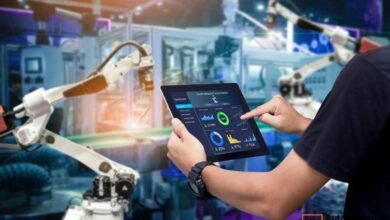
Deepfake Examples: Shocking Cases That Highlight the Need for Advanced Detection
Deepfake technology has grabbed the headlines in recent years, as it can convincingly manipulate video, audio, and images with the use of artificial intelligence. A novelty soon transformed into a serious threat as deepfake videos and images are already used in misinformation campaigns as well as in identity theft and even political manipulation. Because of that, deepfake detection and AI image detection tools have never been as important.
This blog post will run through some of the most striking and concerning examples of deepfakes, but we will also outline how deepfake detection technology is giving these AI-based threats a fight.
1. Jordan Peele PSA Barack Obama
among the first viral deepfake examples was one of former U.S. President Barack Obama. However, it seems that Obama labeled Donald Trump as a total and complete in the video but it was the voice and words of comedian and director Jordan Peele. Peele did this in order to spread awareness about the threats of deepfake videos and the ease at which individuals can be fooled.
Not only did this demonstration horrify people with its level of realism, but it also highlighted why deepfake detection is necessary in political communication. Such videos may be easily uploaded to social media, where false stories may spread in minutes without detection tools.
2. TikTok Deepfake Tom Cruise
In 2021, a number of TikTok videos of actor Tom Cruise doing magic tricks and playing golf became widespread. The catch? They were not true. Developed by a visual effects artist Chris Ume and a Cruise look-alike, those deepfake videos could not be told apart form the real videos.
Despite being clearly harmless entertainment, the ultra-realism of these clips rang the alarm bells in the heads of cybersecurity professionals. They demonstrated how simple it was to impersonate celebrities- and possibly scam or endorsement fraud, or fake news. Such realistic content always puts deepfake detection technology behind, as it should continuously evolve.
3. Nancy Pelosi Slow Speech Video
The manipulated video of the U.S. House Speaker Nancy Pelosi was another notorious case. They even slowed down her speech to give the effect that she was slurring her words and therefore many may be asking themselves whether she was sober or not, or whether she was healthy or not.
Although it was not a deepfake in the absolute terms (it was not created with the facial reconstruction), the video was simplistically edited with the help of AI to be misleading. This case highlights the bigger issue with AI image detection and video analysis: not every manipulated media is generated equally, and detection models should be capable of detecting different types of manipulation.
4. Surrender Deepfake Zelenskyy
The fake video emerged in March 2022, at the peak of the Russia-Ukraine conflict, where Ukrainian President Volodymyr Zelenskyy appeared to urge Ukrainian soldiers to surrender their weapons. The deepfake video was quickly disproved, but not before it had been shared extensively online.
This was a harmful application of the deepfake technology that aimed at manipulating the opinion of the society and the morale of the army. It discussed the national security consequences of this kind of technology and the importance of deepfake detection tools in war situations.
5. Sham Job Interviews and Hiring Scams
Corporate fraud has also been another instance of deepfake use in the real world. Multiple instances have already occurred when scammers utilized deepfake videos to represent executives in virtual interviews or meetings and commit fraudulent hiring or steal access to sensitive data.
Such scenarios demonstrate that deepfake detection technology is required not only by media houses or government organizations but also by corporations and recruitment portals. AI image detection software can be used to confirm that the person in front of the camera is authentic in real-time, reducing the possibility of fraud.
Read Also: Hydrafacial Machine: Enhancing Your Beauty Business with Cutting-Edge Technology
The Deepfake Detection Technology Role
As the phenomenon of deepfakes grows, a significant number of businesses and researchers are in a hurry to find practical approaches to deepfake detection. Such systems may deploy AI image detection to look at minor discrepancies in facial movements, lighting, eye reflections, and skin texture those are difficult to reproduce flawlessly, even with state-of-the-art AI.
The partial list of some of the major players in this area includes:
Microsoft Video Authenticator: The tool scans videos, looking as they have been manipulated with deepfakes, designating a confidence score.
Facebook Deepfake Detection Challenge: A challenge to work with AI researchers to create more effective detection tools.
Companies such as Facia and others provide biometric-powered deepfake and spoofing detection.
These solutions are aimed at delivering real-time notifications whenever a video or an image is suspected to be fake, thereby keeping people, companies, and governments safe.
What Can You Do?
But even though deepfake detection technology is advancing at a pleasing pace, people should also remain alert. The following are some of the ways that can assist you in identifying possible deepfakes:
Watch out for the frozen facial expressions or absence of blinking.
Look at the quality of the video – deepfakes can slightly blur the surroundings of the mouth or eyes.
One can use reverse image search to confirm the origin of a video or photo.
When it contradicts facts that are known or the source is not familiar, be wary of sensational content.
Conclusion
These are only a few examples of deepfakes, but as they demonstrate, the manipulated media may lead to severe real-world implications and consequences, including deceiving the masses of people, or even the world leaders and celebrities impersonation. As deepfakes get more realistic, the AI image detection-powered deepfake detection tools are offering hope of a counter attack.
This is the digital era, and we should be updated and advocates of advanced deepfake detection technology. Regardless of whether you are a person, a business, or a government entity, being aware of the threat landscape is the minimum you can do to secure yourself against the dark side of artificial intelligence.




